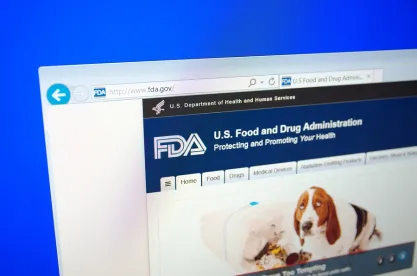On December 18, 2017, FDA announced the availability of a new draft guidance, titled “Investigational IVDs Used in Clinical Investigations of Therapeutic Products.” The draft guidance is intended to inform both product sponsors and IRBs regarding the application of the Investigational Device Exemption (IDE) regulation to investigational in vitro diagnostic devices (IVDs) used in therapeutic product clinical trials. The guidance expands on elements of the agency’s July 2016 draft guidance document for product sponsors, titled “Principles for Codevelopment of an In Vitro Companion Diagnostic Device with a Therapeutic Product,” which we addressed in a previous blog post.
With the growing focus on personalized medicine, IVDs are increasingly used in clinical investigations of therapeutic products to guide the management of subjects in such investigations, for example, to select or classify subjects, assign subjects to therapeutic product arms or doses, or monitor responses to treatment. FDA stated that it was issuing the new draft guidance because the agency is concerned that sponsors and IRBs may not understand that the IVDs used in therapeutic product clinical trials are also often investigational and are subject to the IDE regulation in addition to the Investigational New Drug (IND) requirements applicable to the therapeutic product. The guidance clarifies that an investigational IVD is subject to the IDE regulation even if the therapeutic product is exempt from the IND regulation and even if the manufacturer does not intend to seek FDA clearance or approval for commercial distribution of the IVD.
The draft guidance is intended to aid sponsors and IRBs in determining whether the investigational IVD is exempt from the IDE requirements, is a non-significant risk (NSR) device subject to the abbreviated IDE requirements, or is a significant risk (SR) device such that the trial requires an approved IDE. The draft guidance identifies four factors that sponsors and IRBs should consider when making risk determinations:
- Will use of the results from the investigational IVD lead to some study subjects foregoing or delaying a treatment that is known to be effective?
- Will use of the results from an investigational IVD expose study subjects to safety risks (e.g., adverse events from the investigational therapeutic product) that exceed the risks encountered with the control arm therapy or non-trial standard of care?
- Is it likely, based on existing knowledge about the relationship between the biomarker and the investigational therapeutic product, that incorrect results from the investigational IVD would present a potential for serious risk to study subjects?
- Does use of the investigational IVD require invasive sampling that is not part of standard of care?
The draft guidance also addresses some of the common intended uses for investigational IVDs in therapeutic product clinical trials—including study enrollment, predicting serious adverse reactions, dosing, monitoring, assignment of subjects to study arms, and retrospective analysis—and the risk that likely accompanies such use.
Notably, the draft guidance cautions that the risk determination for an investigational IVD may change during the course of a clinical investigation and that sponsors should perform ongoing surveillance during clinical investigations to monitor the risk of the IVD. The risk of an investigational IVD may change during the course of the study as a result of: safety and outcomes data gathered during the trial, adaptive clinical trial designs that result in pre-planned changes in the use of the IVD, and protocol amendments. If the risk of the investigational IVD changes during the course of a study, an IDE may be required even if the study was initiated as an NSR study or an exempt study without an IDE.
The guidance also addresses the relationship between INDs and IDEs for therapeutic product trials that include use of an investigational IVD, such as when information about an investigational IVD may be required to be included in a related therapeutic product IND. In addition, the guidance discusses issues related to managing IDEs and INDs for the same study. For example, the guidance addresses how IDE and IND submissions may be cross-referenced, and addresses the possibility that an IND may be put on clinical hold if use of an investigational IVD places subjects at an unreasonable and significant risk of illness or injury. The guidance encourages sponsors to meet with FDA in a Q-submission meeting before starting a trial to discuss IVD risk, study design, and regulatory requirements.
Finally, the draft guidance provides high-level recommendations for:
- Information regarding the investigational IVD that the sponsor should include in a submission to the IRB;
- Questions that IRBs should consider when reviewing applications for therapeutic product trials to assess the risks of use of an investigational IVD in the trial;
- When a sponsor may begin a therapeutic product trial involving use of an investigational IVD;
- Information that sponsors should include in IDE applications for investigational IVDs that will be used in a therapeutic product trial; and
- The process for FDA review of IDE applications.
Stakeholders developing IVDs used with therapeutic products, including companion diagnostics, should consider submitting comments on the draft guidance. In particular, FDA is seeking feedback on whether it would be beneficial to allow submission of the IDE components for a significant risk IVD to the IND for the therapeutic product, rather than require both an IDE and IND. Comments to the docket for the draft guidance are due March 19, 2018.





 />i
/>i

